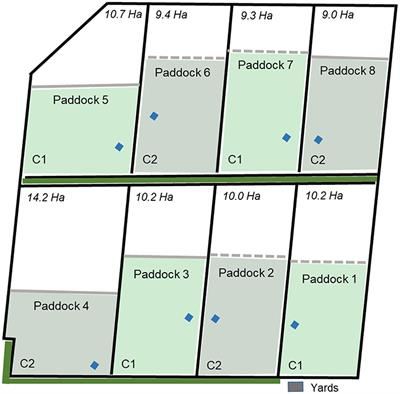IMO, steel posts of ANY kind on an electric fence is just asking for trouble... about as good a direct ground as you can make. Installing this kind of "potential" on every wire every 35' or so just doesn't sound like a good idea to me! I won't use anything for posts that could potentially ground the fence... that rules out a bunch of what's available, but it sure eliminates alot of headaches, and fence diagnosing and fixing time down the road.
For temporary fence using polywire, I use 3/8" fiberglass rods (
https://powerflexfence.com/collecti...oducts/sunguard-pointed-fiberglass-post-483in ), spaced 35-50'. I only use "naked rods"... I don't want/use any "insulators" or "fasteners/clips/ring tops/etc.", because the rods "bundle" so much better when "naked", and it eliminates ALL the tangling issues. And forget about the wire spring clips that they sell for these... they're junk IMHO. I made a 2" PVC "quiver" (like you'd use for arrows) and attached it to a padded, quick clip carpenters belt that I can carry about 30 of them in, enough to do about a quarter mile of fence. To "fasten" the polywire to them, ... just wrap once around the fiberglass rod and on to the next one. I generally install the rods after stringing the wire out, but you "can" do it on the fly too, if you're a little more determined... you just have to do kind of a "double opposite" kind of a wrap, so the poly doesn't slip back past the installed rod then. You'll still have to hold a little bit of tension on the poly then when unrolling (which if the reel is wet, gets your gloves all wet), where if you put the rods on afterward, you can just go from one end to the other with the polyreel, pull up the desired tension, and go back on a second pass to install the rods. I almost always do this "hot", and carry a double insulated needle nose electricians pliers to hold the polywire when "wrapping" the 3/8" rod. Very simple and fast once you've got it down. (Grab the polywire with your needlenose pliers, lay the rod horizontally under the polywire and over your pliers, stand the rod up vertically and push into the ground). Taking it down is also faster/easier with just the single wrap. Most of what I do with polywire though involves daily or 2x/day moves, with just a straight run, typically of considerably less than 1/4 mile. If you're "circling" your herd each time, you might prefer to install the rods "on the fly" on the initial run out.
For permanent perimeter line fence posts, I up the post size to 1 1/4" fiberglass rod posts (
https://powerflexfence.com/collections/fiberglass-rod-posts/products/fiberglass-rod-post-1-14-6 ), spaced at about 35', and I've usually been using 3 wires (cattle herd with calves)... I like to keep the bottom one up at about knee height (so it's easy to mow underneath if I want to), with about 10" spacing. I like 4" fiberglass posts for end posts and H bracing, so that I don't have any insulators anywhere that I need to worry about, EVER. (
https://powerflexfence.com/collecti...sts/products/fp4-5x7-5-fiberglass-corner-post ). I use these on my single wire subdivision fences for end posts too, but I don't H brace them, just a single post driven in with a hydraulic post driver.
In your situation, I'd follow KAStocker and sstterry's advice, putting up a 2 wire or maybe 3 wire if you've got calves and along the highway... and make sure your insurance is up to date. Put the new temp fence in place for a few days ahead of pulling the old fence out is good advice too. If this temporary fence will be "inside" of the "permanent" fence, you could probably use HT, and then just move the wires over one at a time once you get the new posts in place, even with the cattle in the pasture.
BTW, I'm not promoting stuff from Powerflex, only included a link to their products for reference. Lots of farm stores carry the same 3/8" rods. The 1 1/4's and 4 1/2" ones can sometimes be a little more difficult to find, and shipping can get to be an expensive issue too. Powerflex does seem to have "the good stuff" though, and they're generally competitively priced too.
I've looked into the eShepherd GPS fence too, and the idea sounds really great. There's another one out of Norway that's getting close to availability too. However, neither are ready for prime time in the U.S. yet. eShepherd and Gallagher are working together to bring this here. However, you'll STILL need to have a good perimeter fence, and you'll have to expect that occasionally, the system won't work, and animals WILL end up where you didn't want them to be. That's probably acceptable if you've got a perimeter containment fence, and it's "just pasture" anyway, but not so good if you're thinking you're going to use this system to keep them out of a cornfield, or off of a highway! And it's pretty darned expensive... not enough volume or competition in the marketplace yet to bring the price down. I do believe that this IS the future of fencing though, ...but it'll always require some sort of physical fence around the perimeter and along ROW's. Last I knew, it'd cost you about $400/hd with a large herd, and more if you've got a small one.


